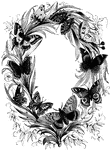
Avocet
The avocet averages about eighteen inches in length, feeding on worms, aquatic insects, and thin-skinned…

Turnstone
The turnstone is found along coasts. It gets its name from its habit of flipping over small stones,…
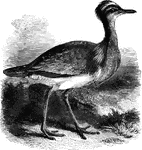
Macqueen's Bustard
Feeding mostly on insects, Macqueen's bustard makes its home in the dry sandy plains of Afganistan.

Common European crane
The common crane of Europe is mostly of a blueish-ash color, feeding on worms, insects, reptiles, mollusca,…
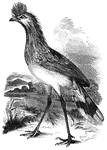
Cariama
Found on the elevated plains of Paraguay and Brazil, the cariama is about thirty inches long and feeds…
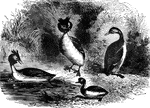
Grebes
Expert swimmers, grebes hunt fish, frogs, crustaceans, and insects in both salt and fresh water.
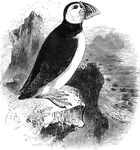
Arctic Puffin
Averaging about twelve inches in length, the arctic puffin feeds chiefly on young fish, crustaceans,…

Spotted tortoise
Feeding primarily on worms and insects, the spotted tortoise averages three to four inches in length.

American box-tortoise
Posessing a nearly perfectly hemispherical shell, the American box turtle ranges from Canada to Florida.…
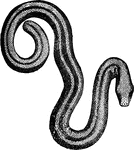
Brown amphisbaena
Ranging from eighteen to twenty-four inches long, the brown amphisbaena feeds on worms and insects,…
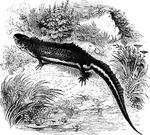
Common warty-newt
The common warty-newt of Europe... is six inches long, and is common in large ponds and ditches, where…

Salamanders
"The Land Salamanders, unlike the Tritons, are ovo-viparous, though the young at first inhabit the water…

Siren lacretina
"Two feet long, black above and dusky beneath. It is of an eel-like form, lives in the muddy water of…

River Bullhead
"Four to five inches long; hides in the water among loose stones, feeds on the larvae of water-insects,…
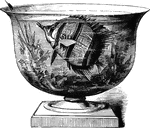
Copperband Butterflyfish
"It feeds upon insects, and is remarkable for its method of procuring them. When it observes a fly,…
Burbot
"Lives in slow-running rivers, is one to two feet long, conceals itself under stones like an eel, and…

Three-Bearded Rockling
"It is twelve to fifteen inches long, frequents rocky ground, feeds on aquatic insects, takes bait,…

Common Dab
"Is eight to ten inches long, feeds on crustacea, small fish, and marine insects, is often caught with…

Gudgeon
"Common in Europe, and is found in streams which flow over gravelly soil. It swims in shoals, feeds…

Chub
"Frequents deep places in the quiet parts of steams, sheltering itself usually under a bush or tree…

Redeye
"Is a very common fish in Europe; it is of brilliant colors, and very tenacious of life; it feeds on…
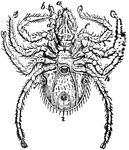
Acarida
"An order of the class Arachinida, includes those insects, as the mites, ticks, itch-insects, etc.,…
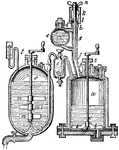
Aerator
"A blower, a contrivance for fumigating wheat and other grain, to bleach it and destroy fungi and insects."-Whitney,…

Mouth and Tongue of a Bee
"The structure of the mouth in insects exhibits very remarkable modifications, and these are of the…
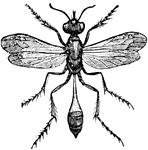
Sand Wasp
"Long Bodied fossorial aculeate hymenopterous insects, commonly called sand-wasps."-Whitney, 1902

Cocktails
"The larvae are very similar to the perfect insects, both in appearance and habits. Many of them feed…

Four-Spotted Beetle
"Smallish insects, generally of a black color, with the elytra rather shorter than the body, which is…
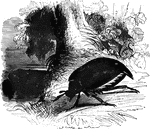
Cockchafer
"In the common European Cock-Chafer, Melolontha vulgaris, they are of considerable length,…

Spanish Fly
"These insects are common in the South of Europe, and are especially abundant in Spain, where they are…

Churchyard Beetle
"These insects are generally found in dark and dirty places about houses, in cellars, and similar situations."…

Diamond Beetle
"Even among the small species several of great beauty are to be met with, and few insects can boast…

Capricorn Beetle
"The insects of this tribe, called Capricorn Beetles and distributed throughout most parts…

Ants and Their Structures
"This tribe, which includes the various kinds of Ants, is composed entirely of insects which live in…
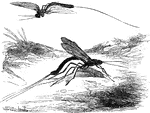
Ichneumon
"The ichineumons, with long ovipositors, as the European species, Ichneumon manifestator, seek…

Geranium Plant Louse
"Aphis; a genus of small plant-sucking insects, of the family Aphididæ and order Homoptera."-Whitney,…

Apple Louse
"Aphis; a genus of small plant-sucking insects, of the family Aphididæ and order Homoptera."-Whitney,…
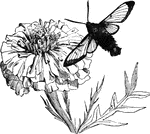
Hummingbird Moth
"A considerable number of insects belonging to Sphingina have transparents wings. Among them is the…

Flies
"In these the head is generally of considerable size, and is furnished with a pair of large, compressed…
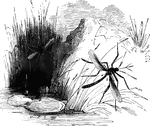
Gnats
"In the family Culicidae, or Gnats, which include several pre-eminently bloodthirsty species,…

May Fly
"These insects are called Day-flies from the shortness of their existence in the perfect state;…

Walking Leaf
"The Phasmina includes some curious insects, one species of which is the Walking-leaf, Phyllium…

Drone Bee
"Bee is the common name given to a large family of hymenopterous or membranous-winged insects, of which…
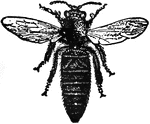
Queen Bee
"Bee is the common name given to a large family of hymenopterous or membranous-winged insects, of which…

Worker Bee
"Bee is the common name given to a large family of hymenopterous or membranous-winged insects, of which…

Royal Cells
"Bee is the common name given to a large family of hymenopterous or membranous-winged insects, of which…

Archerfish
"To this fish has been ascribed the power of shooting drops of water to the distance of 3 or 4 feet,…

Giant Centipede
"A Centipede is a worm having a long slender, depressed body, protected by coriaceous plates, 21 pairs…

Crawfish
"Crawfish, or Crayfish is a name of various crustaceous animals, the common crawfish being the river…
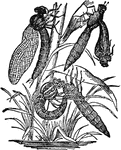
Dragonfly
"The Dragon Fly has a large, broad head, very freely attached to the thorax, and large, convex, prominent…
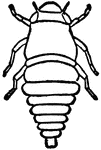
Larval Frog Hopper
"Frog Hoppers are ranked under the homopterous sub-order of insects. The name of frog hopper refers…
Frog Hopper on Leaf
"Frog Hoppers are ranked under the homopterous sub-order of insects. The name of frog hopper refers…

Adult Frog Hopper
"Frog Hoppers are ranked under the homopterous sub-order of insects. The name of frog hopper refers…
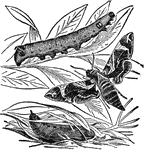
Hawk Moth
"Hawk Moth is a family of the lepidopterous insects, forming along with the clear winged moths and the…

Hedgehog
"Hedgehog is a quadruped distinguished by having the body covered with spines instead of hair. The skin…
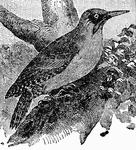
Green Woodpecker
"Woodpecker is the popular name of the old Linnæan genus Picus, now greatly divided. Woodpeckers…
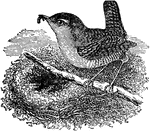
Wren
"Wren is a genus of birds, having a slender, slightly curved, and pointed bill; the wings very short…
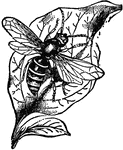
Hornet
"Hornet is the largest species of wasp found in America. The thorax is mostly black; the abdomen is…


